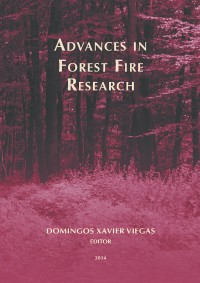Please use this identifier to cite or link to this item:
https://hdl.handle.net/10316.2/34301| DC Field | Value | Language |
|---|---|---|
| dc.contributor.author | Mandel, Jan | |
| dc.contributor.author | Kochanski, Adam | |
| dc.contributor.author | Vejmelka, Martin | |
| dc.contributor.author | Beezley, Jonathan D. | |
| dc.date.accessioned | 2014-10-24T11:02:03Z | |
| dc.date.accessioned | 2020-09-09T21:31:19Z | - |
| dc.date.available | 2014-10-24T11:02:03Z | |
| dc.date.available | 2020-09-09T21:31:19Z | - |
| dc.date.issued | 2014 | - |
| dc.identifier.isbn | 978-989-26-0884-6 (PDF) | |
| dc.identifier.uri | https://hdl.handle.net/10316.2/34301 | - |
| dc.description.abstract | Currently available satellite active fire detection products from the VIIRS and MODIS instruments on polar-orbiting satellites produce detection squares in arbitrary locations. There is no global fire/no fire map, no detection under cloud cover, false negatives are common, and the detection squares are much coarser than the resolution of a fire behavior model. Consequently, current active fire satellite detection products should be used to improve fire modeling in a statistical sense only, rather than as a direct input. We describe a new data assimilation method for active fire detection, based on a modification of the fire arrival time to simultaneously minimize the difference from the forecast fire arrival time and maximize the likelihood of the fire detection data. This method is inspired by contour detection methods used in computer vision, and it can be cast as a Bayesian inverse problem technique, or a generalized Tikhonov regularization. After the new fire arrival time on the whole simulation domain is found, the model can be re-run from a time in the past using the new fire arrival time to generate the heat fluxes and to spin up the atmospheric model until the satellite overpass time, when the coupled simulation continues from the modified state. | eng |
| dc.language.iso | eng | - |
| dc.publisher | Imprensa da Universidade de Coimbra | por |
| dc.relation.ispartof | http://hdl.handle.net/10316.2/34013 | por |
| dc.rights | open access | - |
| dc.subject | VIIRS | eng |
| dc.subject | MODIS | eng |
| dc.subject | WRF | eng |
| dc.subject | WRF-SFIRE | eng |
| dc.subject | Data assimilation | eng |
| dc.subject | Fire spread | eng |
| dc.subject | Fire detection likelihood | eng |
| dc.subject | Fire arrival time | eng |
| dc.subject | Least squares | eng |
| dc.subject | Maximum-a-Posteriori estimate | eng |
| dc.subject | Tikhonov regularization | eng |
| dc.subject | Bayesian | eng |
| dc.title | Data assimilation of satellite fire detection in coupled atmosphere-fire simulation by wrf-sfire | por |
| dc.type | bookPart | por |
| uc.publication.firstPage | 716 | - |
| uc.publication.lastPage | 725 | - |
| uc.publication.location | Coimbra | por |
| dc.identifier.doi | 10.14195/978-989-26-0884-6_80 | - |
| uc.publication.section | Chapter 3 - Fire Management | por |
| uc.publication.digCollection | PB | por |
| uc.publication.orderno | 80 | - |
| uc.publication.area | Ciências da Engenharia e Tecnologias | por |
| uc.publication.bookTitle | Advances in forest fire research | - |
| uc.publication.manifest | https://dl.uc.pt/json/iiif/10316.2/34301/211379/manifest?manifest=/json/iiif/10316.2/34301/211379/manifest | - |
| uc.publication.thumbnail | https://dl.uc.pt/retrieve/11172826 | - |
| uc.publication.parentItemId | 53868 | - |
| uc.itemId | 70284 | - |
| item.grantfulltext | open | - |
| item.fulltext | With Fulltext | - |
| Appears in Collections: | Advances in forest fire research | |
Files in This Item:
| File | Description | Size | Format | |
|---|---|---|---|---|
| 978-989-26-0884-6_80.pdf | 1.3 MB | Adobe PDF |  |
Items in DSpace are protected by copyright, with all rights reserved, unless otherwise indicated.
